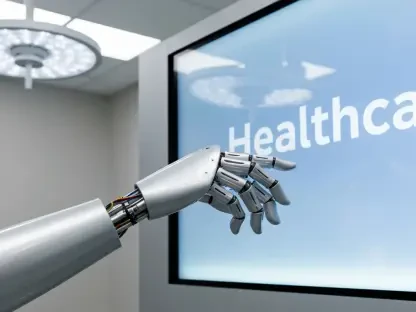The Current Landscape of Health Care: A Generational Perspective
The health care industry stands as a cornerstone of society, navigating a complex web of challenges and responsibilities that impact millions every day. With an expansive scope that includes hospitals, clinics, insurance providers, and regulatory bodies, this sector is both vast in scale and critical in function, yet beneath the surface of technological advancements and policy debates lies an often-ignored dynamic: the influence of generational diversity among professionals and patients.
Delving deeper, the industry is segmented into key areas like health care delivery, policy formulation, and professional training, each shaped by major stakeholders such as providers, insurers, and policymakers. Technology continues to revolutionize diagnostics and treatment, while systemic issues like access and cost remain persistent hurdles. Amid these factors, the interplay of different age groups—both those delivering care and those receiving it—introduces a subtle but powerful force that shapes decision-making and outcomes.
This generational diversity, spanning up to five distinct cohorts in the workforce and patient populations, emerges as a significant yet under-discussed factor. The varying perspectives and expectations across these groups influence everything from workplace culture to care delivery models. Recognizing this hidden layer is essential to understanding the broader challenges and opportunities within the health care ecosystem today.
Generational Dynamics as a Hidden Driver of Change
Evolving Attitudes and Behaviors Across Generations
Generational differences profoundly affect how health care is perceived and administered, creating a dynamic tension within the system. Younger professionals often approach their roles with fresh ideas and a willingness to challenge established norms, while older generations may prioritize experience and tradition. This contrast can lead to friction, particularly in environments where deference to seniority is deeply ingrained, stifling innovation and adaptability.
On the patient side, expectations vary widely across age groups, influencing access and delivery of services. Older patients might value personal interactions with providers, while younger individuals often demand digital solutions and quicker responses. These differing needs place pressure on systems to evolve, requiring a balance between maintaining trusted practices and embracing modern approaches to meet diverse demands.
The clash of attitudes extends beyond individual interactions to broader systemic implications. Younger professionals frequently push for collaborative models and technology integration, yet face resistance from hierarchical structures that favor conventional methods. This generational divide, if unaddressed, risks creating inefficiencies and missed opportunities for meaningful progress in care quality and accessibility.
Evidence of Generational Impact and Future Outlook
Qualitative insights reveal stark contrasts in how professionalism is defined across age cohorts, highlighting the depth of generational influence. For instance, exercises where individuals depict what a “professional” looks like often uncover varied interpretations—older generations might emphasize authority, while younger ones focus on empathy and teamwork. Such differences signal a shift in values that could reshape workplace dynamics over time.
Looking ahead, these generational shifts hold potential to drive systemic reform within health care. As younger professionals gain influence, there is a growing likelihood of increased interdisciplinary collaboration, breaking down silos that have long hindered innovation. Additionally, a focus on equity in access and policy could emerge as a priority, addressing disparities that have persisted for decades.
The trajectory suggests that embracing these changes might lead to a more inclusive and responsive system. With generational turnover, opportunities arise to rethink outdated practices and align health care with contemporary societal needs. This forward-looking perspective underscores the importance of integrating diverse viewpoints to foster a more adaptable and equitable industry.
Barriers to Recognizing Generational Change in Health Care
Acknowledging generational dynamics in health care remains a challenge due to deeply rooted structural and cultural obstacles. Entrenched hierarchies often prioritize the perspectives of senior leaders, marginalizing younger voices that could offer innovative solutions. This resistance to change creates a barrier to integrating new ideas and adapting to evolving needs.
Political influences and stagnant discussions further complicate the recognition of generational shifts. Debates around health care often revolve around familiar themes like cost and coverage, dominated by outdated assumptions that fail to account for changing demographics. This narrow focus limits the scope of reform, overlooking how age-based differences could inform more effective strategies.
Overcoming these barriers requires intentional efforts to foster dialogue across generations and challenge traditional norms. Creating platforms for younger professionals to contribute to policy and decision-making can bridge gaps in understanding. Additionally, encouraging open conversations about generational values and expectations may help dismantle rigid structures, paving the way for a more inclusive approach to industry challenges.
The Role of Policy and Professional Norms in Shaping Generational Shifts
Policies governing health care access and professional training play a significant role in either facilitating or hindering generational change. Current regulations often reflect older frameworks that prioritize compliance over innovation, limiting the ability of younger professionals to implement new ideas. This rigidity in policy can stifle efforts to address modern challenges like digital integration or equitable care distribution.
Professional norms also contribute to this dynamic, as adherence to traditional practices often overshadows the contributions of emerging leaders. Resistance to updating training standards or workplace expectations creates an environment where fresh perspectives struggle to gain traction. Such cultural inertia not only hampers individual growth but also delays systemic advancements that could benefit all stakeholders.
Updating these frameworks to embrace generational diversity is crucial for improving outcomes and fostering innovation. Policies should evolve to support flexible training models and inclusive decision-making processes that value input from all age groups. By aligning regulatory and cultural landscapes with contemporary realities, the industry can better harness the potential of generational shifts to enhance care delivery and accessibility.
The Future of Health Care Through a Generational Lens
Looking toward the horizon, generational change promises to reshape health care through emerging trends like interdisciplinary approaches and rapid technology adoption. Younger professionals are increasingly advocating for collaborative models that integrate diverse expertise, potentially transforming how care is coordinated and delivered. This shift could lead to more holistic solutions that address complex patient needs effectively.
Potential disruptors, such as changing public perceptions and the empowerment of newer generations, also loom large. As younger professionals redefine their roles, they challenge outdated stereotypes and push for greater transparency and accountability in the system. This evolution in identity and expectation may catalyze broader societal shifts, influencing how health care is valued and accessed across communities.
Innovation, policy reform, and cultural adaptation stand as critical pillars in addressing access and equity challenges through a generational lens. Embracing technology to streamline services, revising policies to reflect diverse needs, and fostering an environment of mutual learning across age groups can drive progress. These elements collectively highlight the transformative potential of generational diversity in building a more responsive and just health care system.
Conclusion: Embracing Generational Change for a Better Health Care System
Reflecting on the insights gathered, it becomes evident that generational change holds a pivotal yet often overlooked role in health care reform. The exploration of diverse perspectives across age groups reveals untapped potential for innovation and equity that has long been sidelined by traditional structures. This analysis underscores the urgency of integrating these dynamics into mainstream discussions to address systemic shortcomings.
Moving forward, stakeholders are encouraged to prioritize actionable steps, such as establishing mentorship programs that pair seasoned leaders with emerging talents to foster mutual understanding. Investing in policy initiatives that support flexible training and technology integration also emerges as a vital consideration. These strategies aim to break down barriers and build a foundation for sustainable progress.
Ultimately, the journey highlights a clear path toward harnessing generational diversity as a catalyst for transformation. By committing to inclusive dialogue and adaptive frameworks, the industry stands poised to unlock solutions that enhance access and outcomes for all. This commitment promises a future where health care evolves in step with the changing needs and values of society.









